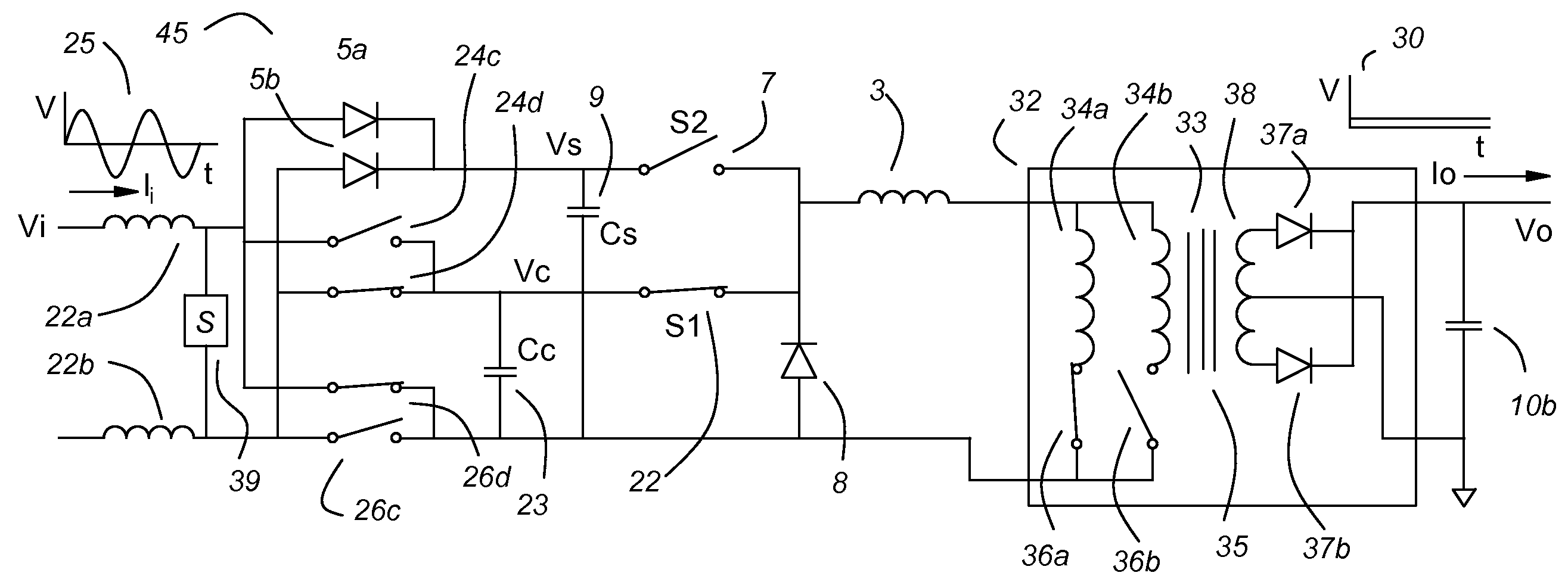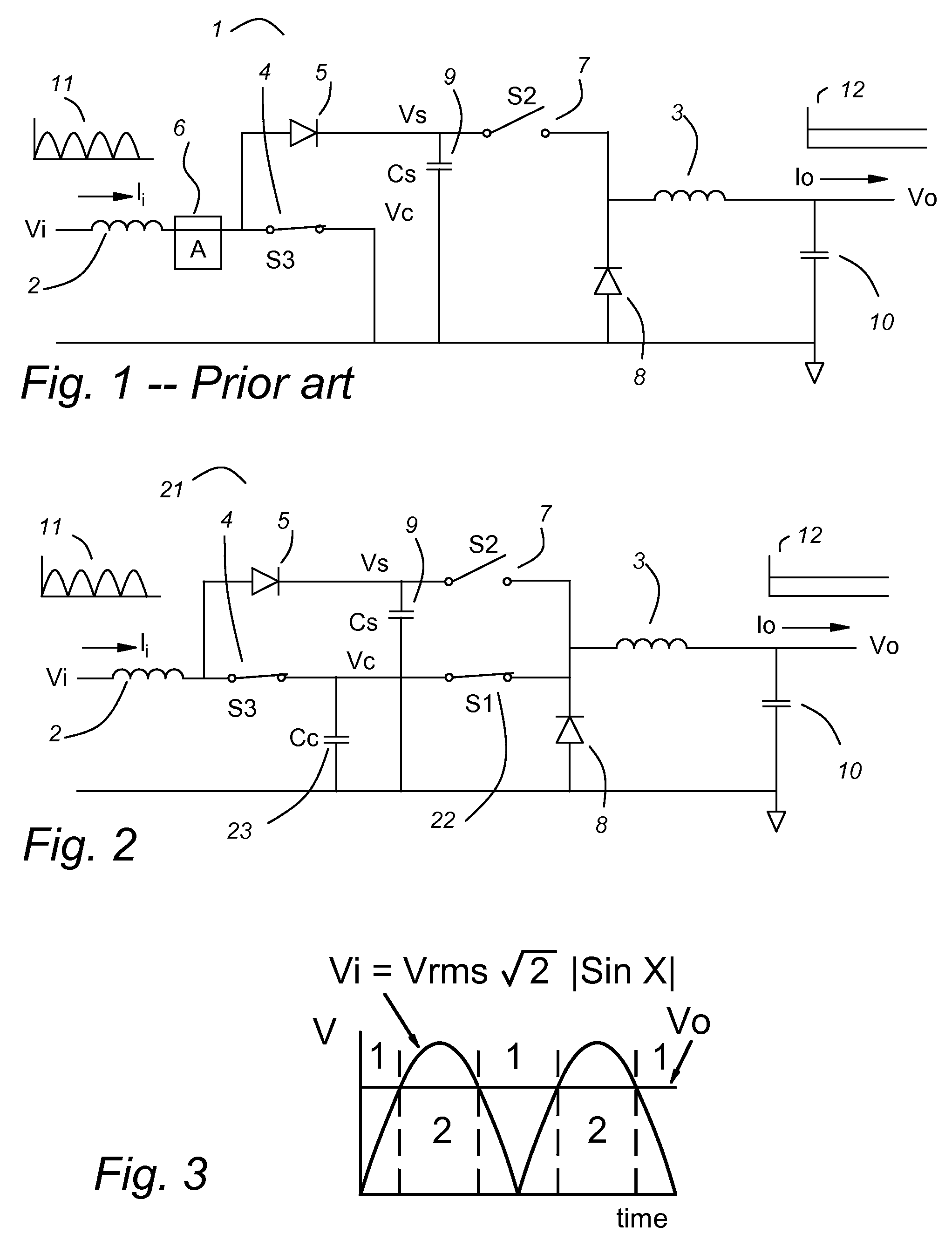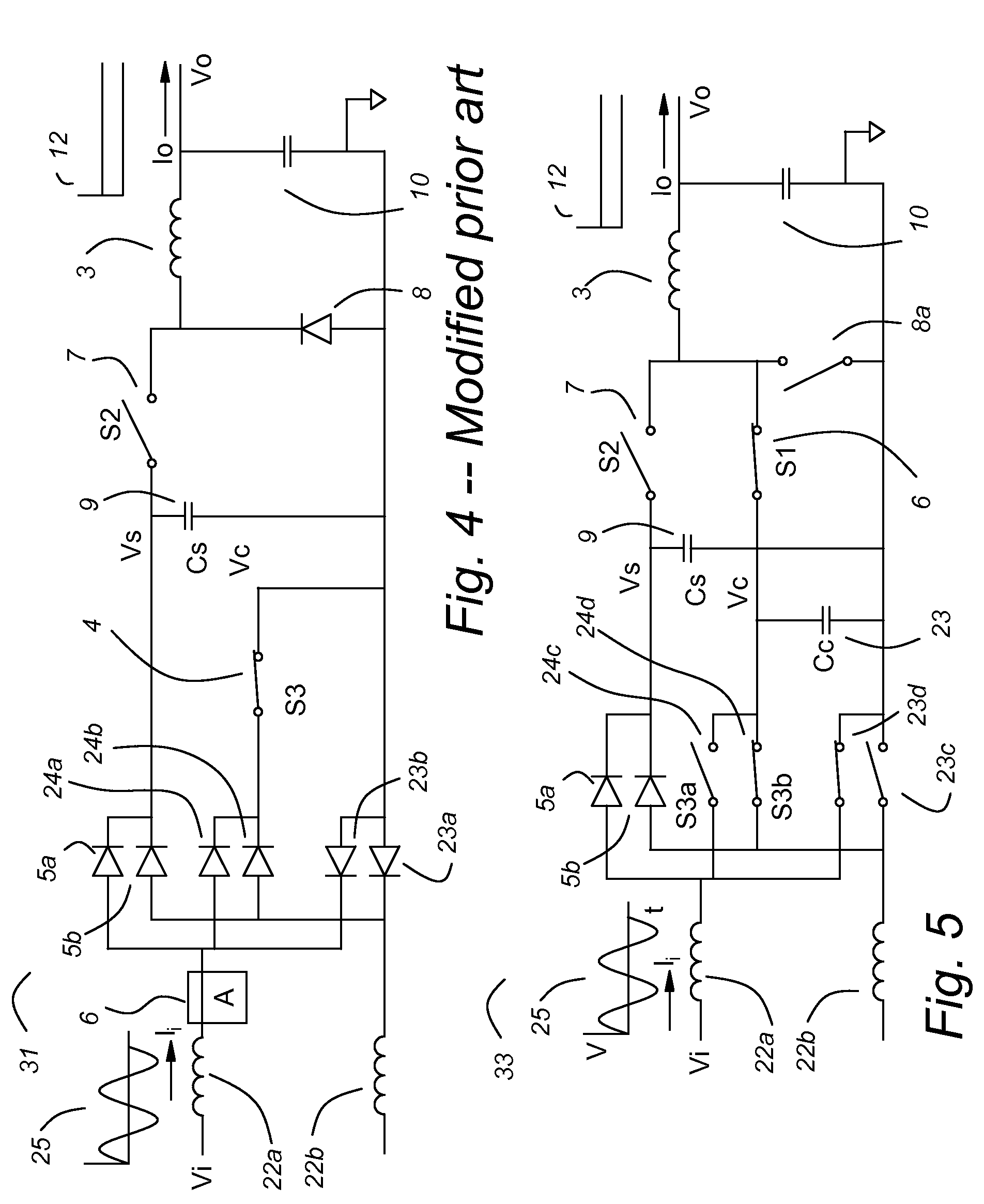Power factor corrected single-phase AC-DC power converter using natural modulation
a power converter and natural modulation technology, applied in the direction of electric variable regulation, process and machine control, instruments, etc., can solve the problems of difficult control, inefficiency, slow pfc circuits of the past, etc., and achieve the effect of minimizing losses and maximizing efficiency
- Summary
- Abstract
- Description
- Claims
- Application Information
AI Technical Summary
Benefits of technology
Problems solved by technology
Method used
Image
Examples
Embodiment Construction
[0036]FIG. 1 shows a prior art power factor corrected (pfc) ac-dc converter 1. An input voltage Vi is a full wave rectified ac voltage, shown graphically by a graph 11. The input stage has a boost inductor 2 to smooth the input current Ii and to provide stored energy for the boost function. A switch 4 connects the boost inductor 2 to the return. When the switch 4 opens, current flows from the boost inductor 2 through a boost rectifier 5 to a storage capacitor 9. The output stage has a buck inductor 3 to smooth an output current and to provide stored energy for the buck function. When a switch 7 closes, current flows from the storage capacitor 9 to the buck inductor 3. When the switch 7 opens, the current flows through a catch rectifier 8. An output capacitor 10 further smoothes a dc output voltage Vo, shown graphically by a graph 12.
[0037]The prior art pfc ac-dc converter requires an input current measurement 6 to control the boost switch 4. The storage capacitor 9 typically is at a...
PUM
 Login to View More
Login to View More Abstract
Description
Claims
Application Information
 Login to View More
Login to View More - R&D
- Intellectual Property
- Life Sciences
- Materials
- Tech Scout
- Unparalleled Data Quality
- Higher Quality Content
- 60% Fewer Hallucinations
Browse by: Latest US Patents, China's latest patents, Technical Efficacy Thesaurus, Application Domain, Technology Topic, Popular Technical Reports.
© 2025 PatSnap. All rights reserved.Legal|Privacy policy|Modern Slavery Act Transparency Statement|Sitemap|About US| Contact US: help@patsnap.com



